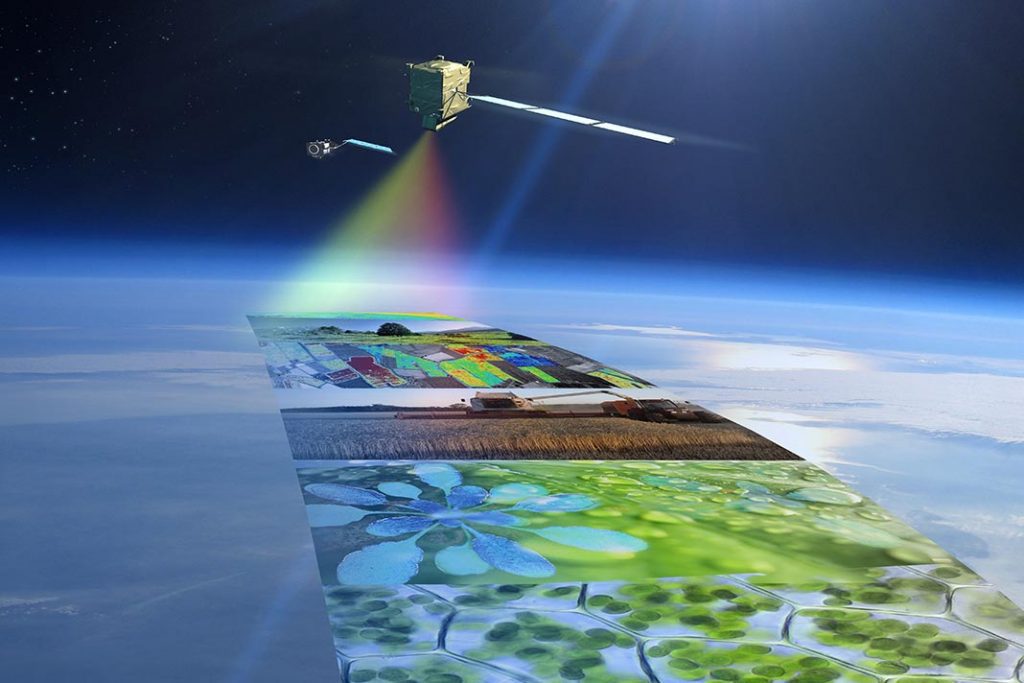Introduction
Understanding Environmental Big Data
Environmental big data refers to the vast and diverse datasets that are generated through monitoring, modeling, and analyzing various environmental phenomena. These datasets can include information on climate patterns, weather events, air and water quality, biodiversity, land use, and more. The sheer volume, velocity, and variety of environmental data, when harnessed effectively, can provide valuable insights into the complex processes that drive climate change and help inform effective mitigation and adaptation strategies.
The benefits of using big data for climate change analysis
The use of big data in climate change analysis offers numerous benefits, including improved accuracy of climate models, better understanding of environmental processes, and the ability to develop targeted and effective strategies for addressing climate change. Furthermore, big data analytics can help identify patterns and trends that may not be evident through traditional methods, enabling researchers and policymakers to make more informed decisions and allocate resources more effectively.
The Application of Big Environmental Data in Climate Change Studies
Climate modeling and simulation
Big environmental data can be used to develop climate models that can help scientists better understand the complex interactions between the Earth’s atmosphere, oceans, and land surface. Climate models are essential tools for understanding the processes that drive climate change and predicting future climate conditions. Big data can help improve the accuracy and reliability of these models by incorporating a wider range of variables and allowing for more sophisticated analysis of complex interactions. Additionally, the use of machine learning and artificial intelligence can help optimize model parameters, leading to more accurate predictions and better understanding of uncertainties.
Assessing the vulnerability of ecosystems and communities
Big data can play a crucial role in assessing the vulnerability of ecosystems and communities to climate change. By analyzing large datasets on factors such as temperature, precipitation, land use, and population dynamics, researchers can identify areas that are most at risk and develop targeted strategies to protect ecosystems and vulnerable populations.
Monitoring environmental change
Big data can be used to monitor changes in the environment, such as changes in temperature, precipitation, and sea level rise, which can help scientists better understand the impact of climate change. Natural resource managers can monitor ecosystems, and optimize both the business and the environment.
Assessing risk
Big environmental data can be used to assess the risk of climate-related disasters, such as floods, wildfires, and hurricanes, which can help communities better prepare for and respond to these events.
Identifying emissions sources
Big environmental data can be used to identify sources of greenhouse gas emissions, such as power plants and transportation, which can help policymakers develop effective strategies to reduce emissions.
Developing sustainable products
Big data can be used to identify consumer trends and preferences related to sustainable products, which can help businesses develop more sustainable products and reduce their environmental impact.
Generating early warnings
Big environmental data can be used to generate early warnings of climate-related disasters, such as floods and wildfires, which can help communities prepare and respond more effectively.
Identifying the most effective adaptation and mitigation strategies
The process to identify the most effective climate adaptation and mitigation strategies involves several steps:
- establish a climate strategy and define targets aligned with science.
- conduct a careful analysis of the current position on climate change and develop a strategy to create opportunities.
- set requirements for suppliers and align with stakeholders.
- design, implement, and evaluate climate policies, which requires scientific research on both current and possible future policies.
- Identify and compare benefits, costs, and risks associated with climate change and non-climate policies at different scales and jurisdictions.
- Establish effective governance for the process of setting up long-term low-emissions development strategies.
Big data can help in all parts of this process. For example, by identifying patterns and trends in emissions data, researchers can develop targeted strategies for reducing emissions and promoting the adoption of cleaner technologies.
Challenges and Limitations of Using Big Data for Climate Change
Technical expertise limitations
Analyzing and interpreting environmental big data requires specialized skills in data science, machine learning, and statistical analysis, which may not be readily available or accessible to all researchers and professionals. This can limit the ability of organizations and researchers to fully harness the potential of big data for climate change analysis and decision-making.
RTEI has access to many climate change technical experts. Let us know if we can help.
Computational limitations
Developing and running complex models and algorithms to analyze big data can be computationally intensive, requiring advanced hardware and software resources that may not be available to all. This can pose challenges for smaller organizations and research institutions that may lack the necessary resources to fully utilize big data for climate change analysis.
RTEI has developed many cloud native platforms to help solve this limitation. Our experts are available to assist you.
Examples of Open Big Data for Climate Change Analysis
Open datasets can provide a wealth of data and information on climate change. Here are some example open big datasets to get you started:
- Climate Data Online (CDO): CDO is an open data platform developed by the National Oceanic and Atmospheric Administration (NOAA) that provides access to a wide range of climate data, including temperature, precipitation, and sea level data. This platform is available globally.
- Global Forest Watch: Global Forest Watch is an open data platform developed by the World Resources Institute (WRI) that provides access to data on forest cover and deforestation, which is used by researchers and policymakers to inform climate change mitigation efforts. This platform is available globally.
- Copernicus Climate Change Service (C3S): C3S is an open data platform developed by the European Union that provides access to climate data, including temperature, precipitation, and sea level data, which is used by researchers and policymakers to inform climate change mitigation efforts.
- OpenAQ: OpenAQ is an open data platform that provides access to air quality data from around the world, which is used by researchers and policymakers to inform climate change mitigation efforts. This platform is available globally.
- Canadian Open Data Portal: The Government of Canada provides access to a wide range of open data related to climate change, including data on greenhouse gas emissions, climate projections, and climate impacts. This data is used by researchers and policymakers to inform climate change mitigation and adaptation efforts in Canada.
How professionals from various industries can harness big environmental data for climate action
Oil and Gas
Big data can help the oil and gas industry professionals identify opportunities for reducing emissions, optimizing energy efficiency, and transitioning to cleaner energy sources. By analyzing large datasets on production processes, energy consumption, and emissions, companies can develop targeted strategies for reducing their environmental footprint and mitigating the impacts of climate change.
Natural Resource Management
Big data can play a critical role in the sustainable management of natural resources, such as forests, water, and biodiversity. By analyzing large datasets on land use, species distribution, and ecosystem health, natural resource managers can develop targeted strategies for conservation, restoration, and sustainable use.
Transportation
Professionals working in the transportation sector can harness big environmental data for climate action in several ways. Firstly, they can use big data to monitor and analyze transportation-related emissions, such as those from vehicles, planes, and ships, and identify opportunities to reduce them. Secondly, they can use big data to optimize transportation systems, such as traffic flow, routing, and scheduling, to reduce energy consumption and emissions. Thirdly, they can use big data to develop and implement sustainable transportation policies and programs, such as incentives for electric vehicles, public transportation, and active transportation modes like walking and cycling. Fourthly, they can participate in open innovation challenges like “Data for Climate Action” to leverage private big data to identify revolutionary new approaches to climate mitigation and adaptation. Finally, they can promote sustainable mobility by encouraging individuals and organizations to adopt low-carbon transportation options and reduce their carbon footprint. Despite the potential benefits of using big data for climate action, there are also challenges and limitations, such as a lack of standardization in data collection and analysis, data quality issues, and concerns about data privacy and security.
Insurance
The insurance industry can use big data to better understand and quantify the risks associated with climate change, such as extreme weather events and sea-level rise. By analyzing large datasets on historical weather patterns, climate projections, and vulnerability assessments, insurance companies can develop more accurate risk models and inform the development of new insurance products that address the impacts of climate change.
Urban planners and architects
Big data can provide valuable insights for urban planners and architects seeking to design more sustainable and resilient cities. By analyzing data on urban form, land use, and climate patterns, professionals can develop strategies for reducing urban heat island effects, promoting green infrastructure, and designing buildings that are more energy-efficient and adaptable to changing climate conditions.
Environmental scientists and researchers
Environmental scientists and researchers can use big data to better understand the complex interactions between climate change and environmental systems, as well as to develop new methods for monitoring and predicting the impacts of climate change on ecosystems and human communities.
Policy makers and regulators
Big data can help inform the development of effective climate policies and regulations by providing insights into the effectiveness of various mitigation and adaptation strategies, as well as by identifying the most vulnerable communities and ecosystems. By harnessing the power of big data, policymakers can make more informed decisions and allocate resources more effectively in the fight against climate change.
Essential skills for professionals working with environmental big data for climate action
Data analysis and visualization
Professionals working with environmental big data for climate action should possess strong data analysis and visualization skills, as these are essential for interpreting complex datasets and communicating findings to stakeholders.
Machine learning and artificial intelligence
Machine learning and artificial intelligence are increasingly important tools for analyzing and interpreting environmental big data. Professionals should have a strong understanding of these techniques and their applications in climate change research and decision-making.
Geographic Information Systems (GIS) and remote sensing (GEOAnalytics)
GIS and remote sensing are important tools for collecting and analyzing spatial data related to climate change. Professionals working with environmental big data should have a strong understanding of these technologies and their applications in climate change research and decision-making.
As an example, RTEI was the main designers of GEOAnalytics Canada – a cloud native platform for analyzing huge volumes of geospatial remote sensing data.
Best Practices for Working with Environmental Big Data for climate action
When working with environmental big data for climate action, professionals should adhere to best practices for data collection, analysis, and interpretation. These best practices include ensuring data quality and integrity, using appropriate statistical methods, and effectively communicating results to stakeholders. Follow reproducible data science techniques to allow others to reproduce your analysis and results. Additionally, professionals should stay up-to-date with the latest developments in data science, machine learning, and artificial intelligence, as these technologies continue to evolve and offer new opportunities for climate change research and decision-making.
Emerging technologies and their potential impact on climate change research
Blockchain and decentralized data management
Blockchain technology is increasingly being integrated into climate change research and solutions due to its inherent transparency, security, and decentralization. It’s being used to create and manage carbon credits, allowing for a transparent and tamper-proof system for tracking carbon emissions and offsets. This can help ensure the integrity of carbon markets and promote investment in low-carbon technologies. Blockchain can also enable peer-to-peer energy trading on a microgrid, encouraging the use of renewable energy sources and reducing reliance on fossil fuels. Moreover, the technology is being used to secure data from environmental sensors and to track and verify sustainable supply chains, ensuring goods are produced and transported in a climate-friendly way. Finally, blockchain’s smart contracts can automate the funding of climate-related projects, removing administrative barriers and accelerating the transition to a low-carbon economy.
Advanced machine learning algorithms for climate prediction
Advanced machine learning algorithms, such as deep learning and reinforcement learning, hold promise for improving the accuracy and reliability of climate predictions. These algorithms can process vast amounts of environmental data, identifying complex patterns and relationships that would be difficult, if not impossible, for humans to discern. This capability is proving invaluable for climate prediction, as machine learning algorithms can simulate and forecast potential climate scenarios based on a variety of factors, including greenhouse gas emissions, land use changes, and more. These predictive models can provide critical insights into future climate conditions, allowing scientists, policymakers, and communities to prepare and implement effective mitigation and adaptation strategies. Moreover, machine learning algorithms can continually learn and improve from new data, enhancing the accuracy and reliability of climate predictions over time..
The role of big environmental data in achieving global climate goals
Environmental big data plays a critical role in achieving global climate goals and sustainability, including the targets set out in the Paris Agreement, which aims to limit global warming to well below 2 degrees Celsius, preferably to 1.5 degrees Celsius, compared to pre-industrial levels.
- Informing Climate Policy and Action: Big environmental data provides a solid, evidence-based foundation for climate policy and action. By analyzing this data, we can understand the severity of the climate crisis, identify the most significant contributing factors, and measure the effectiveness of various mitigation and adaptation strategies. This information is crucial for countries as they work to fulfill their commitments under the Paris Agreement.
- Climate Modeling and Predictions: Big data can be used to develop sophisticated climate models that predict future climate scenarios. These models are essential for understanding the potential impacts of climate change and determining the actions needed to meet the Paris Agreement goals.
- Monitoring and Verification: Big environmental data enables real-time monitoring of environmental changes and human-induced emissions. This is critical for verifying that countries are meeting their nationally determined contributions (NDCs) under the Paris Agreement, and for adjusting these commitments as necessary.
- Promoting Transparency and Accountability: The transparency and accountability provided by big environmental data are vital for the success of international agreements like the Paris Agreement. By making climate-related data readily available, countries can hold each other accountable for their commitments.
- Supporting Sustainable Development: Beyond climate change, big environmental data also supports broader sustainability goals. For example, it can be used to monitor biodiversity, manage natural resources more efficiently, and promote sustainable agriculture—all of which are crucial for building a more sustainable and resilient future.
Encouraging innovation and fostering a data-driven culture in climate change mitigation
To fully realize the potential of big data for climate change mitigation, it is essential to encourage innovation and foster a data-driven culture within organizations and institutions. This includes promoting collaboration between data scientists, environmental researchers, and decision-makers, as well as investing in the development of new data analytics tools and techniques. By harnessing the power of big data, we can unlock new solutions to the pressing challenges of climate change and work towards a more sustainable future.
Conclusion
Environmental big data offers tremendous potential for advancing our understanding of climate change and informing the development of effective solutions. By harnessing the power of big data, professionals across various industries can contribute to the global effort to mitigate and adapt to the impacts of climate change. By fostering a data-driven culture and investing in the development of new tools and techniques, we can unlock new opportunities for innovation and drive progress towards a more sustainable future.
Next Steps
Round Table Environmental Informatics (RTEI) is a consulting firm that helps our clients to leverage digital technologies for environmental analytics. We offer free consultations to discuss how we at RTEI can help you.


